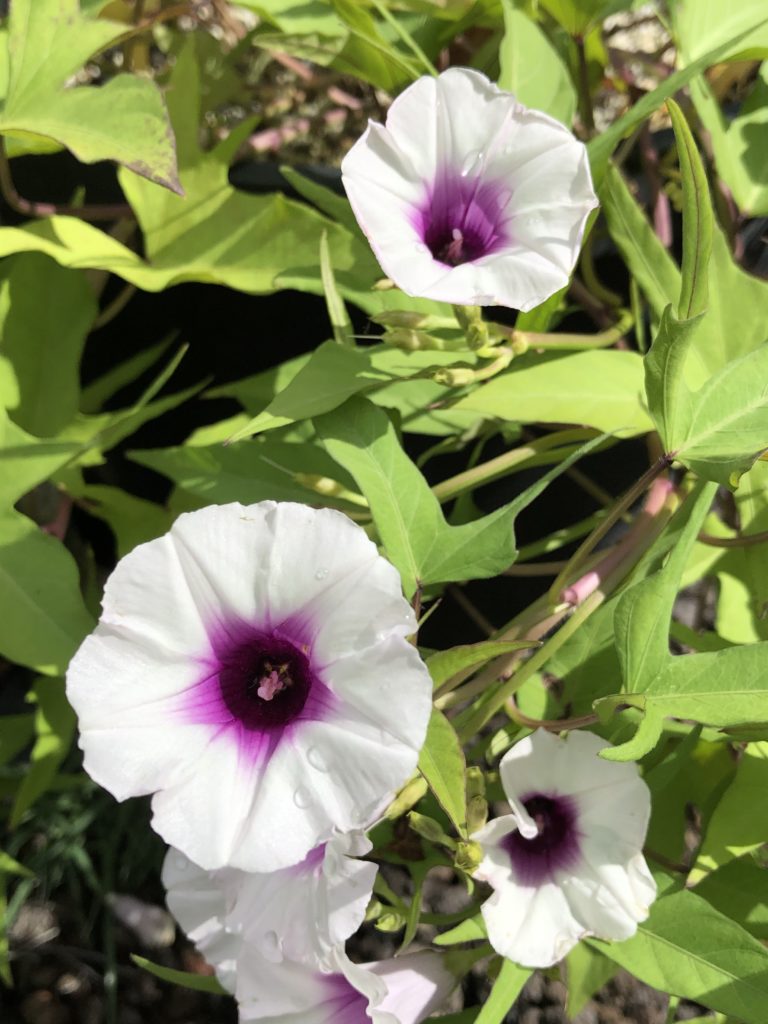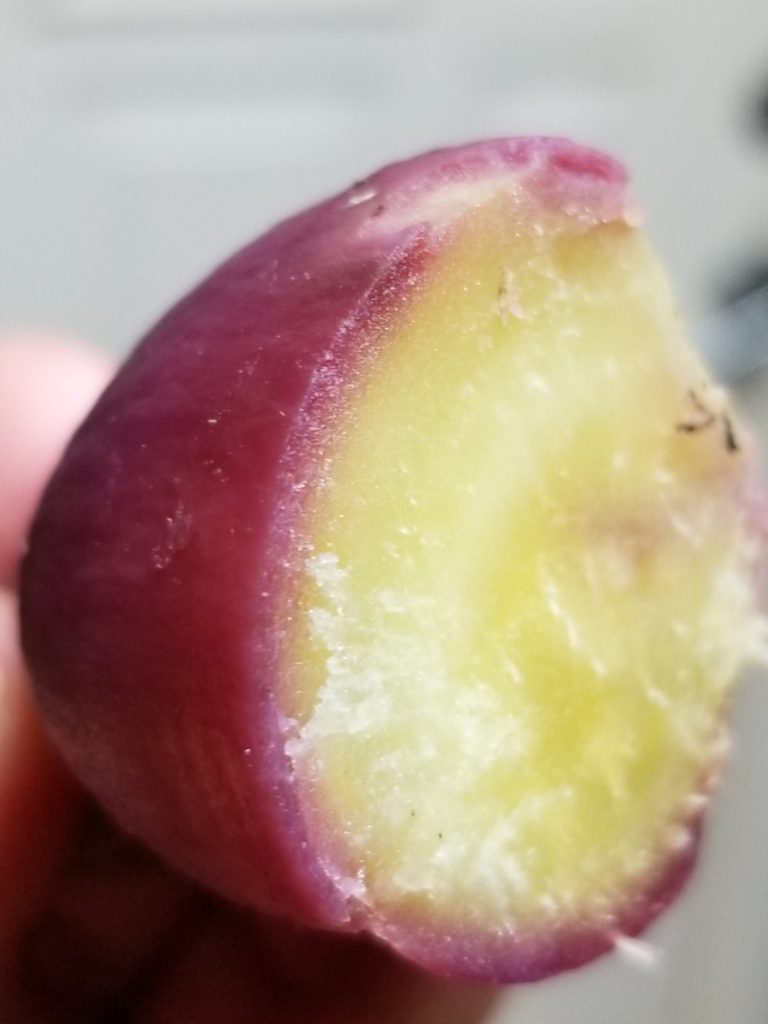By Mike DeMotta, Curator of Living Collections
“He ‘uala ka ‘ai ho’ola koke i ka wi” – Sweet potato is the food that quickly restores health after famine
The first Hawaiian voyagers arrived in the Hawaiian Islands with approximately two dozen plants that were important enough to earn space on the crowded outrigger canoes used to cross the ocean. These ‘canoe plants,’ as they are known, were vital for providing food, fiber, medicine, and more. Many of these plants had multiple uses. Three were essential staple food crops — kalo (taro), ulu (breadfruit), and uala (Hawaiian sweet potato).


Easily propagated and grown from live cuttings or slips, uala (Ipomoea batatas) was widely cultivated on all the islands. Many communities in Hawaii’s driest areas placed great value on uala and were able to produce enough of the starchy vegetable to sustain large populations by strategically planting it during the rainy winter months and keeping it stored underground for some time after the rains had ended.
Over many generations, mahiai (Hawaiian farmers), who understood the importance of crop diversity, developed many different varieties. They cultivated these hearty, tuberous roots, protecting against total loss of any given variety and building resilience in the event of changing weather patterns or other environmental instability.
As a staple food, uala is an excellent source of vitamin C, beta carotene, potassium, protein, and minerals. The unevenly-shaped Hawaiian sweet potato is valued as a life-preserving crop, but the shoots and young leaves (called palula in Hawaiian), are also cooked and eaten. Offering great flexibility in its preparation, uala can be cooked in the same ways as other potatoes. My favorite way to enjoy uala is steamed in an imu (traditional Hawaiian underground oven). Like kalo, uala can also be mashed into a soft poi which has the consistency of thick pudding and is eaten with fish. Uala poi ferments quickly and so it must be consumed within a day or two. Grated uala cooked with coconut milk is called palau and enjoyed as a special treat.
Today there are about 24 different varieties of Hawaiian uala. Each has a distinctive leaf shape and colors of skin and flesh that range from orange and red to white. The variety Eleele literally means ‘black’ and is named for its very dark stems. Huamoa (‘chicken egg’) is a smallish, egg-shaped tuber. Inside, its darker yellow center is reminiscent of an egg yolk. Palaai (literally: ‘fat’) refers to the size of the large tubers. Piko (‘navel’) is recognized by its deeply-lobed leaves.
Mike DeMotta Inspects uala variety papaa kowahi growing outside the nursery.
Like other multi-use edible canoe plants, many uala have medicinal value. One example of uala’s medicinal use was in the concoction apu, a drink with many ingredients, but primarily made with uala. Apu has been traditionally prepared for women to be taken soon after childbirth to facilitate healing.
NTBG currently has about 20 uala varieties in our collections growing at our south shore Conservation and Horticulture Center and at Limahuli Garden on Kauai’s north shore and Kahanu Garden on Maui. We maintain all varieties within our nursery because of the challenges of growing uala in the field, namely the tenacious feral pigs who always seem to know when uala is ready to harvest. If we don’t get to them first, the pigs will complete their own harvest and never fail to eat everything, destroying all stems and leaves as they go. Growing a backup collection safely inside our nursery, helps us ensure we preserve these irreplaceable varieties.
At NTBG, we have a strategic objective to maintain collections of important Hawaiian canoe plants within our gardens. Heirloom or heritage varieties of canoe plants that are not grown commercially tend to become less common. Each named variety of canoe plant holds great importance in Hawaiian culture, whether identified in ancient legends or for its value as food and medicine. Preserving these varieties, cultivated over many generations, and the names ascribed to each, is equally important. As a key component of Hawaiian language and culture, we must remember these names which provide connections to Hawaii’s ancestors. The same uala we grow today can be traced back many generations to Hawaiian farmers of long ago, providing us with essential sources of food, medicine, and beauty, and living links to an ancient past.
The UN General Assembly has designated 2021 as the International Year of Fruits and Vegetables. The campaign provides an opportunity to increase awareness of the importance of fruits and vegetables to health, nutrition, food security, and UN Sustainable Development Goals.